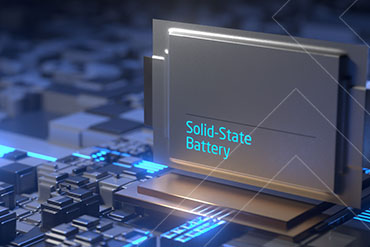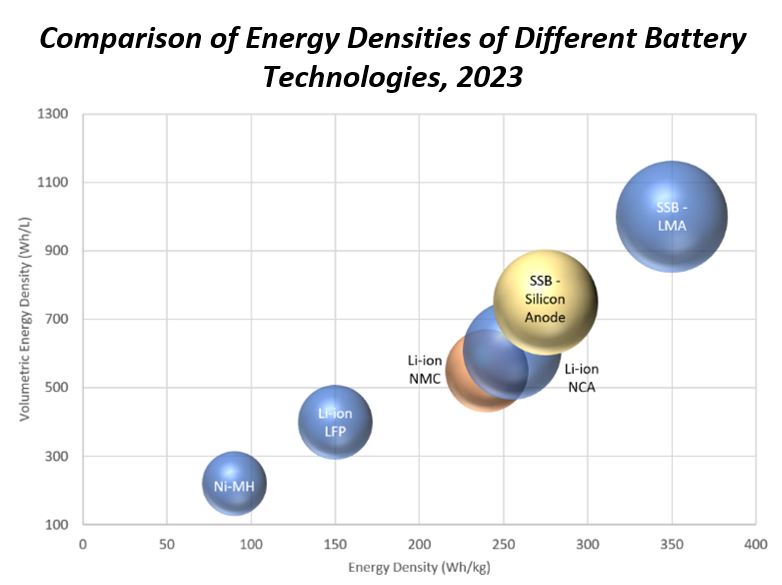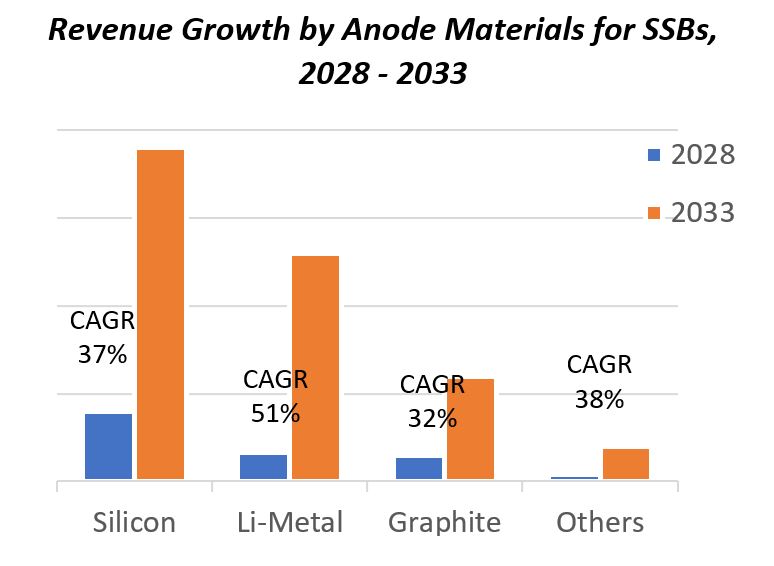
Solid State Batteries and Lithium Metal Anodes – The Holy Grail of Battery Technology
Fossil Fuels and Battery for Mobility
The combination of energy density and ease of fuel handling of fossil fuels is, as yet, unmatched, resulting in its role as the driver of the world’s economy. However, with fossil fuel emissions being the poster boy for global warming, tipping in the global move towards decarbonization has been reached.
Deploying battery electric vehicles (BEV) is crucial for lowering emissions and applying the brakes on global warming. However, with the first BEVs arriving in the late 1800s, they are not a new development in the evolution of the automotive powertrain.
Zero-emission Mobility and its Challenges
Technology developments over the past few decades have offered a route for enhancing energy sources other than fossil fuels in automotive applications. Mainly, developments in battery technology have been essential to increasing powertrain electrification and adoption of BEVs, thus meeting EV mandates and supporting emissions regulations.
The breakthrough for xEVs (hybrid and electric vehicles) was using Ni-MH batteries, followed by Li-ion batteries, which have accelerated xEV adoption. And development has accelerated to overcome challenges and meet the ever-increasing performance demands.
The demands on battery technologies are primarily focused on energy density, safety, and cost, followed by cycle life and fast charging capacity. The often-cited range anxiety is a derivative of the above factors and the availability of a charging network. Enter solid-state battery technology, which addresses all of the above.
Solid State Batteries – the next stage of battery evolution
The key differentiator in SSBs is the use of solid-state electrolytes, compared to the liquid electrolytes in conventional Li-ion batteries. These offer significant safety benefits while resulting in a compact package. At scale, the production costs are projected to be lower than Li-ion batteries, meeting the top 3 demands placed on battery technologies. Additionally, fast charging is also an aspect where SSBs have met the requisite performance.
The benefits of solid electrolytes, however, are not limited to the above factors, and their ability to bring together anode developments offers a true next-stage battery solution. New anode materials, such as alloys, silicon, and lithium-metal, are of great interest due to the high specific capacity on offer. Combining solid electrolytes and high-specific capacity anodes improves energy density via mechanical and electrochemical properties.
Lithium Metal Anodes – the holy grail for batteries
Where the SSB package offers benefits over Li-ion batteries, the solid electrolytes also enable the use of Lithium metal anodes (LMA). LMAs have the highest specific capacity, at more than 10 times the capacity of current graphite anodes, and are thus considered the holy grail of batteries. The use of LMA also promotes anode-less design and in-situ formation of the anode, bringing down production complexity and cost.
LMA, though, brings its own challenges in terms of dendrite formation and cell expansion, affecting the battery’s overall life. Naturally, this has been the focus of cell developers and OEMs, and significant breakthroughs have been achieved via material and mechanical designs.
Competitive Landscape
The landscape for battery technologies is highly competitive, with sodium-ion batteries already available in the world’s largest BEV market, China. Even within SSBs, Silicon anodes are competing with LMAs by offering performance close to LMA SSBs. For its part, the use of Silicon brings its own challenges regarding volume changes and structural integrity. However, Silicon anodes are closer to the market and will co-exist with LMA SSBs.
Aside from SSB, Sodium-ion batteries’ cost competitiveness is its major strength, while it also has abundant resources combined with a good low-temperature performance. However, its limitations in terms of low energy density are negated by the lower cost, making it suitable for smaller vehicles targeting a limited range.
80% of the Forbes Global 2000 B2B companies rely on MarketsandMarkets to identify growth opportunities in emerging technologies and use cases that will have a positive revenue impact.
- Food Packaging Market Size Set for Strong Growth Through 2030 Amid Rising Demand for Convenience Foods
- Fertilizers Industry Set to Grow at 4.1% CAGR Through 2030
- Leading Automated Guided Vehicle Companies 2024: An In-depth Analysis
- CHARGED UP: SHIFT TO E-MOBILITY AND THE EVOLUTION OF TRANSPORTATION
- Global Automotive Market: Predictions For 2024
SSB MARKET OUTLOOK
In the race for electrification, Japanese OEMs were the first to market – Toyota with their hybrids, using Ni-MH chemistry, and Nissan with the Leaf BEV - and thus have led fleet-wide emissions over the past couple of decades.
The European and North American OEMs, trailing in hybridization and fleet-wide emissions, have made a significant and sustained push into electrification over the past decade. This includes investment into the battery value chain and a wave of announcements highlighting the move to expand EV offerings. Subsequently, the market for SSBs is projected to reach USD 8-10 Billion by the end of the decade.


Crucially, over the past few years, North America and Europe have also witnessed increased investments into building battery production capacity, alongside investments into SSB development. This is mainly driven by the focus on reducing geographical dependence and partly by the desire to improve the local value chain.
Conversely, the view on Japanese OEMs over the past few years has been that of a laggard regarding zero-emission vehicles, considering the limited share of PHEVs and BEVs in their line-up. 2023, however, has shown that the Japanese players have been very active in developing the next stage of battery technology, the solid-state battery.
Indeed, Japanese OEMs are well positioned to be the first companies to offer consumers a vehicle with a solid-state battery. If successful, it can even be considered that the Japanese OEMs effectively skipped through Li-ion battery technology to settle on SSBs.
Authored by Shweta Surender, MarketsandMarkets
- Lithium Metal Market by Source(Salt Lake brine, Lithium Ores), Application(Lithium-ion anode material, Alloy, Intermediate), End-Use Industry(Batteries, Metal Processing, Pharmaceuticals), & Region(APAC, North America, Europe, RoW) - Global Forecast to 2028
- Solid-State Battery Market by Battery Type (Primary, Secondary), Capacity (Below 20 mAh, 20-500 mAh, Above 500 mAh), Application (Consumer Electronics, Electric Vehicles, Medical Devices, Energy Harvesting, Wireless Sensors) - Global Forecast to 2031




